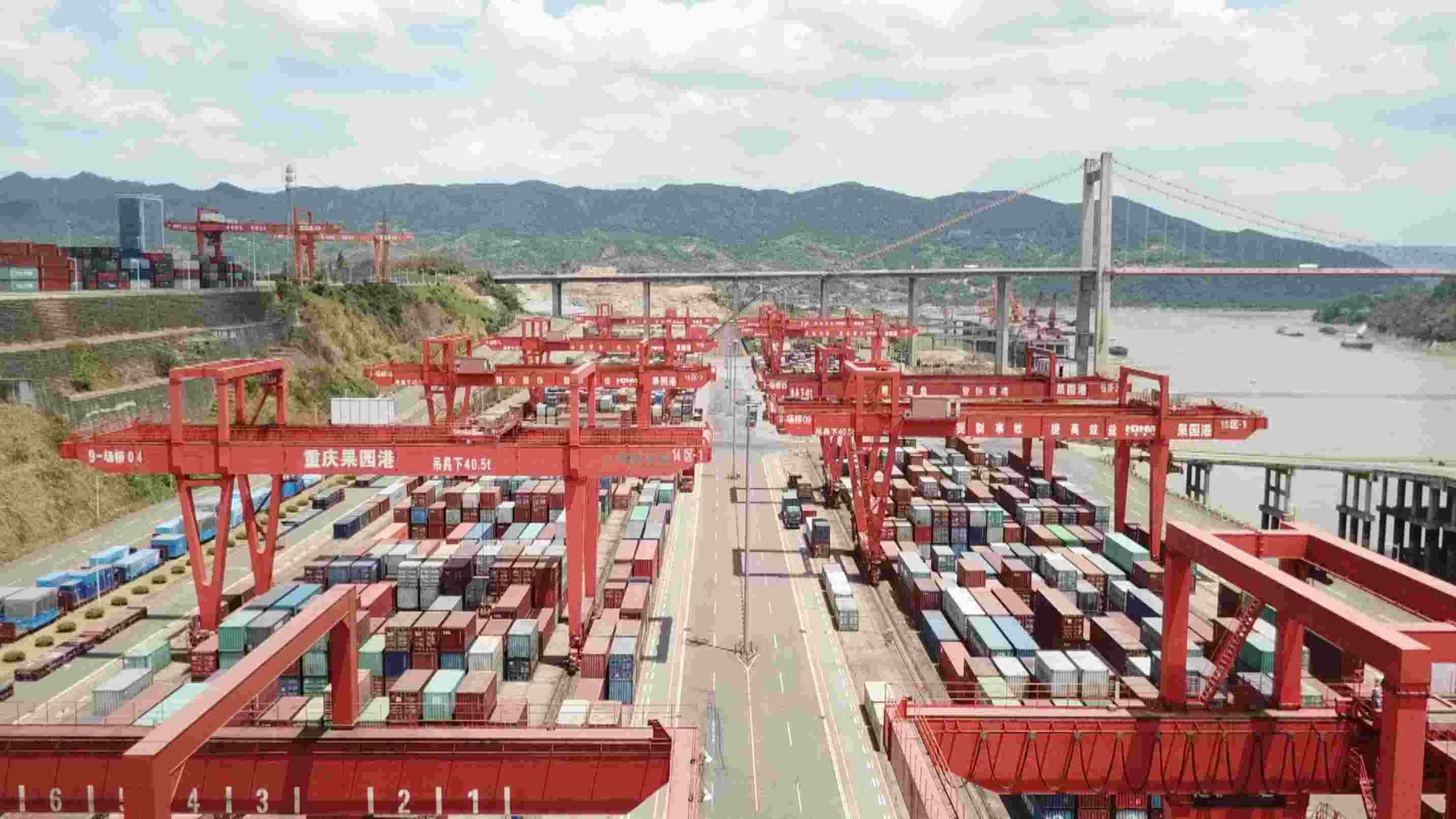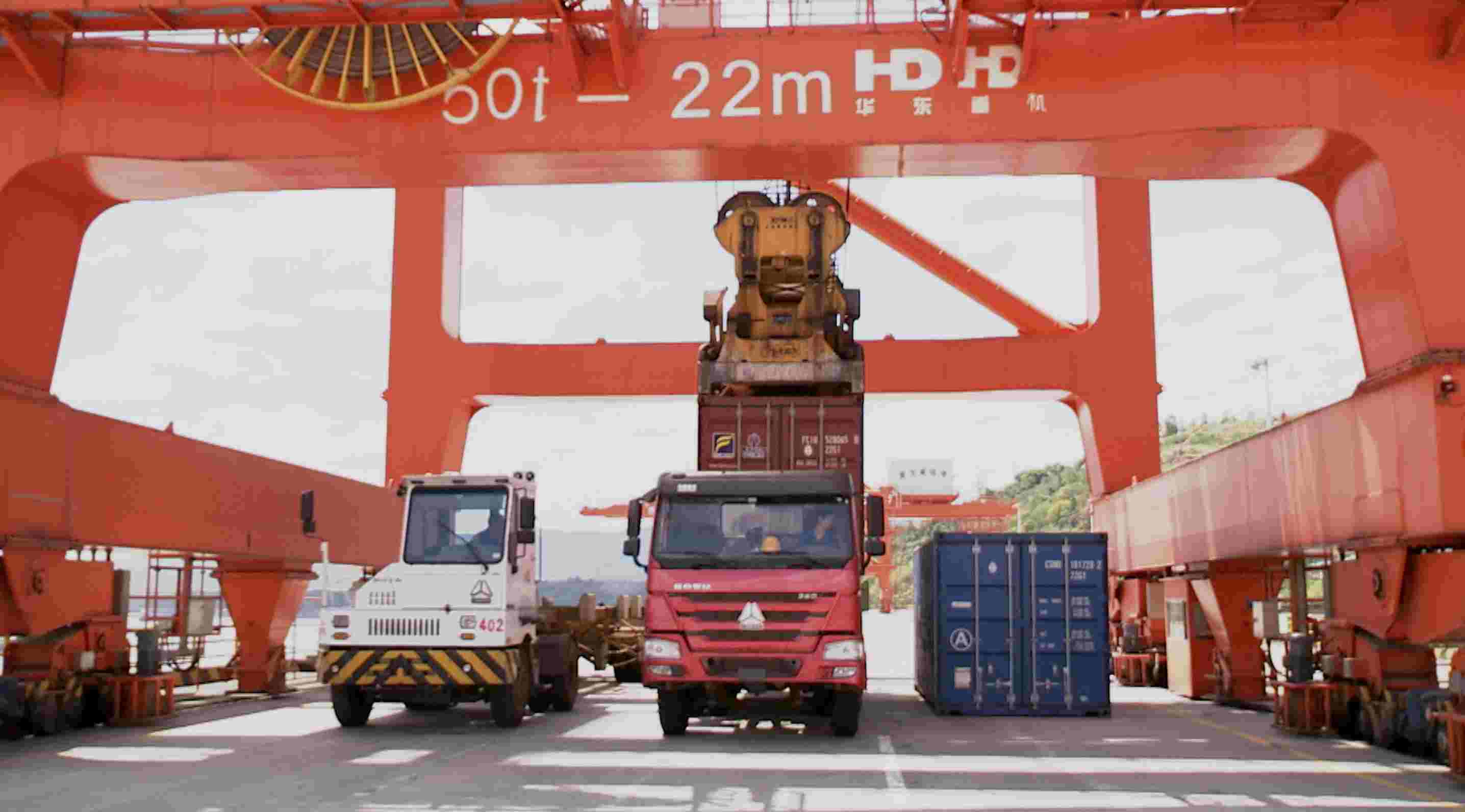
Business
11:54, 31-Jul-2018
Along the Yangtze River ports connect ocean and land
Updated
11:03, 03-Aug-2018
CGTN
01:33

Guo Yuan port, the largest inland port in west China, plays a key role in connecting the Yangtze River and railway transportation in southwestern China’s Chongqing municipality.
Although located 2,400 kilometers away from the sea, this port is striving to become a major transportation hub in west China, especially for cargo shipped here. They could be loaded on a train here and then head straight to Europe.
Major ports in Chongqing have developed their cargo handling capacity, and are now seeing a 10 percent rise in traffic.
Chen Tongfeng, the manager of a shipping company, is happy to see the changes. “Now we are replacing road with railway transportation. It could cut costs for our customers by two-thirds.”
A railway connecting Chongqing with Europe was opened at the end of 2017, as part of the China-led Belt & Road Initiative. In the first half of this year, Chongqing has seen over 300 trains heading to Europe.

Guo Yuan port in Chongqing. /CGTN Photo
Guo Yuan port in Chongqing. /CGTN Photo
“We can provide very efficient transfers between water and railway routes,” said Wang Zhiyu, the deputy general manager of Guo Yuan port, “with a capacity of 30 million tons every year.”
As China continues to promote the Belt and Road, such combinations of the Yangtze River and the railway system will help more businesses reduce their international transportation costs.

SITEMAP
Copyright © 2018 CGTN. Beijing ICP prepared NO.16065310-3
Copyright © 2018 CGTN. Beijing ICP prepared NO.16065310-3